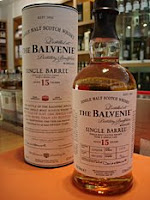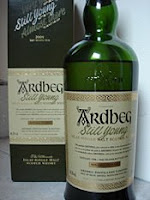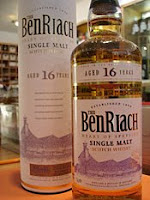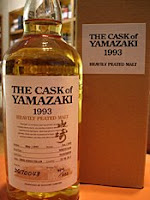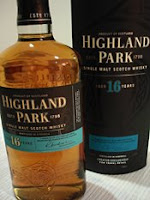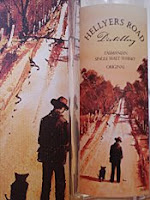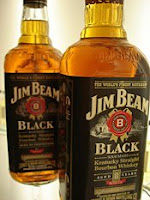 The Scotch Malt Whisky Society is a members club devoted to bottling single casks of whisky. They concentrate mostly on Scottish malt distilleries, although they do release some grain whiskies and malts from other countries. The Society has its base in the UK with two members rooms in Edinburgh and one in London. There are also bases spreading around the world and these currently include America, Australia, Japan and throughout Europe. The collection of whiskies is extensive, covering 126 different distilleries and they bottle over 200 new casks every year. The Society celebrated its 25th anniversary last year and currently has over 20,000 members spread around the globe. For information about joining and to look through their extensive range of whiskies, visit www.smws.co.uk.
The Scotch Malt Whisky Society is a members club devoted to bottling single casks of whisky. They concentrate mostly on Scottish malt distilleries, although they do release some grain whiskies and malts from other countries. The Society has its base in the UK with two members rooms in Edinburgh and one in London. There are also bases spreading around the world and these currently include America, Australia, Japan and throughout Europe. The collection of whiskies is extensive, covering 126 different distilleries and they bottle over 200 new casks every year. The Society celebrated its 25th anniversary last year and currently has over 20,000 members spread around the globe. For information about joining and to look through their extensive range of whiskies, visit www.smws.co.uk. The newest selection of bottlings are being released on Friday 1 May and we were lucky enough to be invited to try some of them at the London members rooms of The Scotch Malt Whisky Society. Their whiskies seem to offer great value for money and are of supreme quality as they go through a rigorous tasting panel process. All are bottled at their natural cask strength and are unchillfiltered to maximise the flavours and characteristics of the whisky. They also have a unique labelling system uses numbers rather than naming distilleries. For example, something labelled as 25.47 has 25 being the number ID of the distillery and 47 being the number of casks bottled from that distillery. The Scotch Malt Whisky Society believe that the numbering system removes any bias that people have about certain distilleries and allows members to concentrate on the aromas, flavours and characteristics of the whisky.
25.47 (Rosebank 19 years old)
Rosebank is a Lowland whisky and the distillery closed in 1993. The whisky as a result is running out and becoming harder to find. A great way to try it is through independent bottlings. The colour is light but golden and the nose is lovely and fresh. There is a gorgeous citrus note (think of lemon) with some sweet vanilla, something herbal (imagine fresh green grass) and a floral element (sounds strange I know, but think of roses). The palate is light and zingy with lots of that lemon and vanilla, some honey and a slight warm spicy note (reminding me of ginger). With water, it became sweeter with the spiciness becoming more prominent. The finish was shortish, crisp, very refreshing and palate cleansing with the herbal element coming through well.
Info - 56.7% ABV, 256 bottles, £73
36.42 (Benrinnes 16 years old)
This Speyside distillery is relatively hard to find as a single malt. This is due to its owners, Diageo, using the majority of the whisky produced at Benrinnes for their highly popular Johnnie Walker blended range. It is well reknowned for its use of quality sherry casks and this can be first seen in the colour, which is amber with a slight brown orange tint. The nose is wonderful, sweet and rich with dried fruit (think of raisins and sultanas), caramel, something slightly nutty (imagine almonds, I think) and something bitter (think of dark chocolate). These are replicated beautifully on the palate and are joined by a grainy cereal note (almost like a digestive biscuit). This cereal element is enhanced when water is added, as is the caramel. The finish is long, rounded, fruity and complex. An excellent example of a sherry cask matured whisky and a bargain price.
Info - 57% ABV, 542 bottles, £46
126.1 (Hazelburn 11 years old)
Hazelburn is produced by the Springbank distillery in Campbeltown. They distil Hazelburn for just one month of the year and it is unusual among Scottish whisky, as it is distilled three times instead of twice. The lack of production limits stock and this is the first cask of Hazelburn ever released by the Society. It has been matured in a Pedro Ximinez sherry cask and this evident in the colour, which is very dark and resembles espresso coffee. The nose is very rich and complicated with everything battling away together. There are dried fruit (think of raisins and candied orange peel), dark chocolate, black treacle, intense coffee, something solventy and waxy (sounds odd but think of furniture polish) and a hint of sulphuric smoke (imagine coal burning or a burning match head). This is rich, sweet and treacley on the palate and covers the inside of your mouth. The complexity from the nose makes this an intense experience with the candied orange peel in particularly prominent. With water, it becomes more sulphuric and the treacle becomes more sugary. The finish is long, rich and intensely fruity, but becomes slightly woody and tannic at the end.
Info - 56.7% ABV, 207 bottles, £49
27.74 (Springbank 12 years old)
The Springbank distillery in Campbeltown has a cult following of whisky drinkers. Its popularity is based on a reputation of high quality and distinctive whiskies. This one is no different. The colour is extremely light and straw-like. This is quite salty on the nose with lots of vanilla complimenting this (a number of people commented that it reminded them of an anejo tequila or mezcal). The palate is light and refreshing with a lovely herbal note (think of dried grasses), plenty of that vanilla and an interesting citrus note (imagine grapefruit). It is all back up with a touch of smoke (think of burning embers). With water the saltiness really comes out and the initial grassiness becomes more vegetal (think of seaweed). The finish is reasonably long, salty and smoky, yet light and refreshing. Excellent whisky for an excellent price.
Info - 57% ABV, 193 bottles, £49
33.75 (Ardbeg 7 years old)
This bottling is from the iconic Ardbeg distillery on the south eastern coast of the island of Islay. It is a young whisky that is light, pale straw in colour. Initially, it doesn't seem that smoky but this starts to change with time. The smoky peatiness becomes stronger and gets quite spicy (think of black pepper). In addition, the nose has some lovely herbal notes (imagine fresh cut grass) and vanilla. On the palate, the peatiness is still spicy and is reminiscent of charcoal embers. The youthful age is evident as there are some fresh green fruits present (think of pears and apples) but these mix well with the grassiness, vanilla and smoke. There is also a slight saltiness that creeps in. With water, the vanilla becomes sweeter and the smokiness becomes more earthy (imagine damp moss). The finish is very long, spicy and peaty. Younger whiskies can be under developed and a bit harsh, but Ardbeg handles it youthfulness well as demonstrated here and in their 'Very/Still Young' range.
Info - 61.5% ABV, 260 bottles, £47







